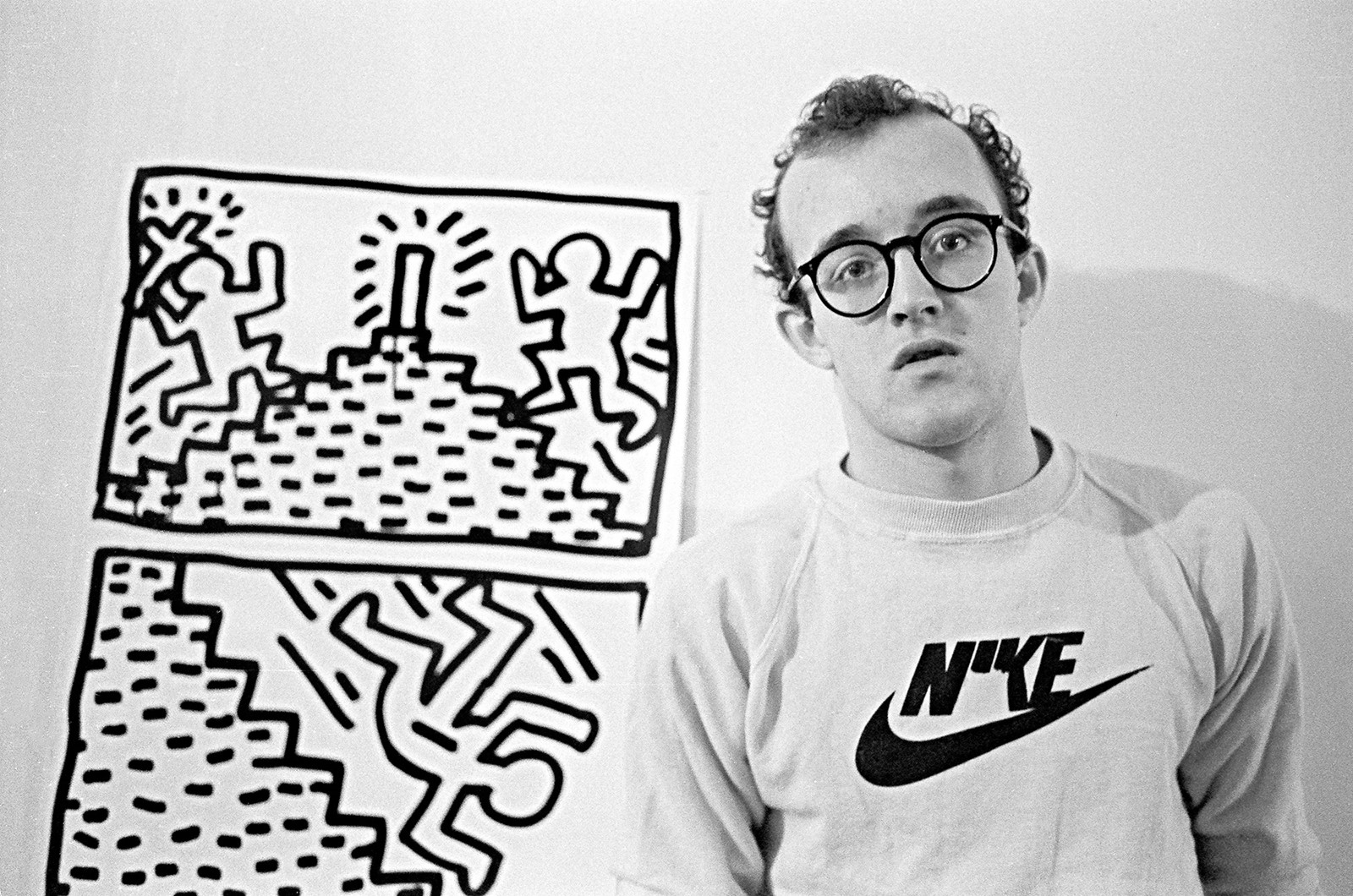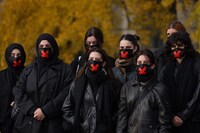The New York-based artist set the world alight with a compulsion to make work with a cause. As his retrospective opens at Tate Liverpool, curator Tamar Hemmes traces his incredible legacy
Almost three decades since his untimely passing in 1990 from Aids-related complications, Keith Haring’s work is being given a major retrospective at the UK’s Tate Liverpool. Curated by Tate’s Darren Pih and Tamar Hemmes, the exhibition will display more than 85 of Haring’s works, shining a light on his huge archive and exponential work ethic. “There are so many influences on Haring that people don't know about, especially people who are just familiar with the very iconic ones like ‘Radiant Baby’ and ‘Barking Dogs’,” says Hemmes. “To see the influence of the club and hip hop scene of 1980s New York, that vibrant street culture, but also the impact of the political context. Being able to also see the primary materials he used, as well as photographs and video, will give people a much richer view of what Haring’s practice was like.”
Speaking on why Haring’s works are so relevant today, Hemmes adds: “I think because his imagery is so accessible, that is something that has stayed in people’s consciousness. People will see the ‘Radiant Baby’ and immediately know what it is even if they might not be able to connect the name to it.” As to why he is gaining traction again today, Hemmes draws parallels between Haring’s era and our current climate. “He was talking about issues that are still so relevant today,” she explains. “Both issues surrounding racism, gender equality, but also Aids, which obviously isn't a historical issue, it's still very much affecting people today. In a way, you always have a period where people need a bit of distance, but right now things are probably as politically turbulent as they were in the 1980s in New York, and I think that these are works that people can connect to on a new level.”
The exhibition will open Haring’s oeuvre up to a new generation to make new meaning of it, decades after he completed his last work. “For Haring, his work was not finished until the person viewing it perceived it in their own way or created their own understanding of the work. He didn't want to just put meaning onto his work and say: ‘this is the only way you can understand it’. He wanted people to have that interaction with the works themselves.”
Haring was born in Pennsylvania on 4 May 1958 to parents Joan and Allen, the oldest to three sisters. Taught to draw from a young age by his father, a keen cartoonist, his visual vernacular was heavily influenced by the social, cultural, and political environment of the time – from the Space Race to Dr. Seuss, and the advancement of computer technology. Moving to New York in 1978 to study at the School of Visual Arts (SVA), he made friends with future icons such as Jean-Michel Basquiat, Madonna, and Kenny Sharf, and found a new home amongst the thriving art and heaving club scenes. He was revered for his desire to make art accessible for all, whether through his now-famous Subway Drawings on New York’s train carriages, the protest posters he made and handed out at Aids rallies and anti-nuclear demonstrations, painting the body of Grace Jones for her electric performances, or his many public murals and artworks. Remembered as an extremely generous person, his want to give back to those less fortunate has continued after his death through the work of the Keith Haring Foundation, set up in 1989 to protect his legacy but also to provide imagery and funding to Aids and children’s charities worldwide.
With the exhibition opening this week (14 June – 10 November) at Tate Liverpool, we asked Hemmes to connect the context of Haring’s life to some of his key artworks going on display.
“UNTITLED” (1983): HIS CHILDHOOD AND THE FORMATION OF HIS VISUAL LANGUAGE
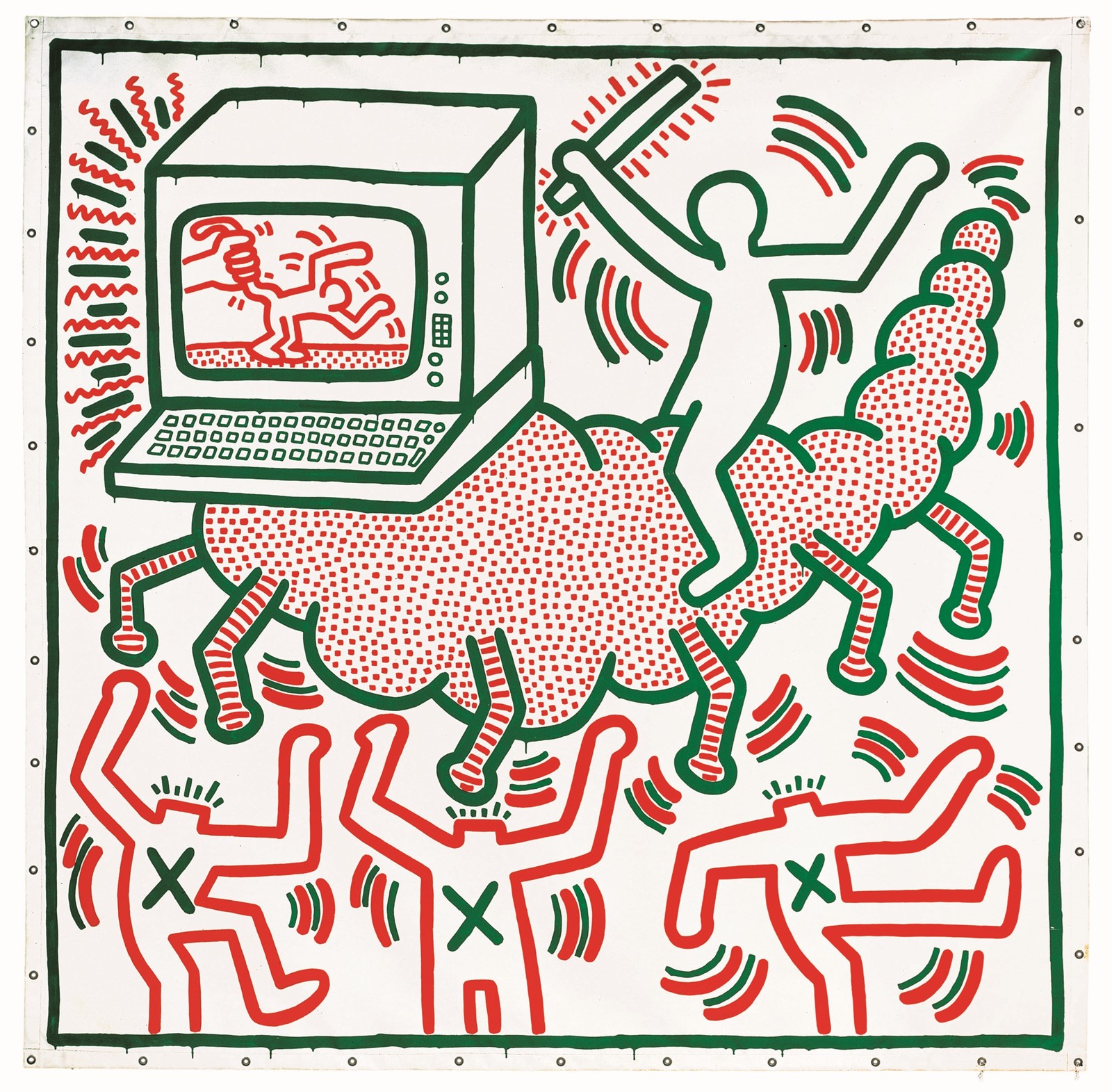
“Haring was a child of his time. He was raised in America in the 60s, he was the first generation of the space age, he grew up at a time when key events like the moon landing were being televised, and he called himself a child of the atomic age. He also grew up amongst a backdrop of protests, race riots, and other political issues, and so he had a certain awareness from a very young age. He felt his language was being determined by the world he was living in, which you can really see in his visual language; the flying saucers, the computer screens, the nuclear symbols.
“He would sometimes replace the heads of his figures with a computer screen, which can be interpreted in different ways. But what I think is so interesting is that in 1978, so early on before computers were something that many people were using, or were aware of in that way, Haring was saying we had stopped evolving and technology was taking over – that this technology we had created would take over. That's so interesting when you relate it to the discussion that's going on now about artificial intelligence, where there's this fear about what technology is going to do. The fact that he was having those thoughts 40 years ago is really incredible.
“Haring's father was a keen drawer and he taught Haring to draw from a really young age, and he encouraged him to use his own imagination. Haring was interested in Disney and Dr. Seuss, and so you see those sort of elements in his work. He was very interested in comics, which you can see in the black border he created around his drawings.”
THE SUBWAY DRAWINGS (1980-1985): THE EARLY DAYS AND THE NEW YORK SUBWAY
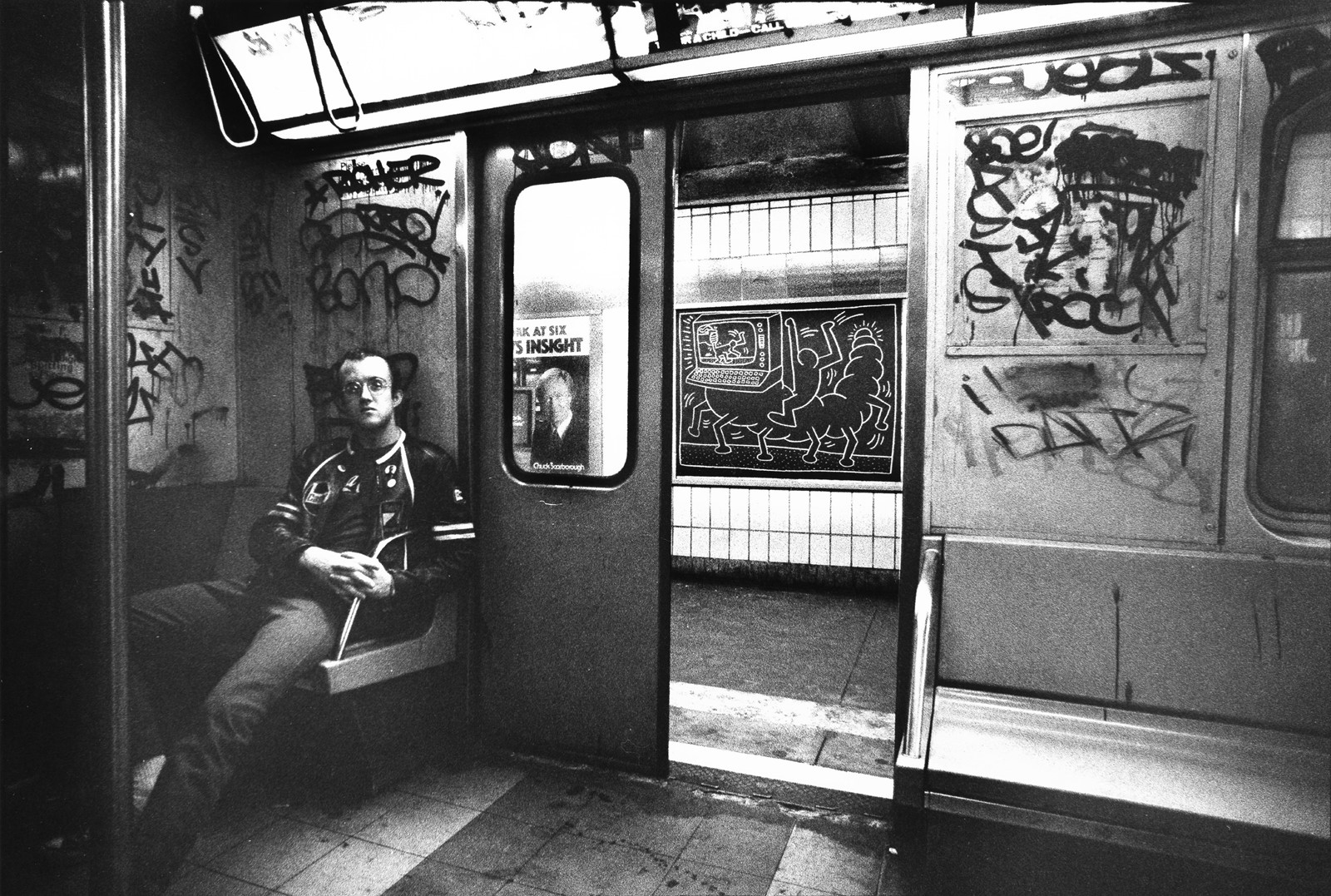
“Haring wanted to speak to a diverse audience, so he started creating art on the subway in 1980, and continued for five years. He literally created thousands of them and had an incredibly diverse range of people who were commuting to and from work every day who were not only encountering the work but also Haring creating the work. So there was a performative aspect to how he was making the work and he really enjoyed the dialogue that these subway drawings allowed him to have.
“He was inspired by the graffiti scene at the time, and a lot of graffiti artists were tagging and spray painting on the subway cars, but he didn't want to just copy what they were doing – that was their thing to do. But while he was riding the subway he saw these black papers covering old advertisements and something just clicked for him. He felt like he could use those very quickly to create his artwork, so he ran up the stairs, got some chalk, and started drawing (on them). He would make up to 40 of those drawings a day.
“He felt that, in many ways, the art world was too elitist. He saw an audience being ignored” – Tamar Hemmes
“At some point, people started cutting the drawings out of their frames or just taking the frames altogether, which went against Haring's idea behind it (of it being accessible to anyone). So he stopped doing the subway drawings and a year later he opened his Pop Shop. The Pop Shop was a new iteration of creating art that was open to everyone, it was a shop where he was selling merchandise for very affordable prices, and so, again, this idea that everyone could have a piece of his art.
“In this image, you see Haring sitting on the (New York) subway. But through the open doors, you also see one of his drawings in the background. It's this amazing black and white image taken by Tseng Kwong Chi who photographed a lot of Haring’s work and a lot of his subway drawings. This image really, especially with his subway drawings, points to his philosophy that he created art available to everyone. He felt that, in many ways, the art world was too elitist. He saw an audience being ignored, but it wasn't the audience that was ignorant – the audience is open to art when art is open to it, and I think that is really key for a lot of this work.”
PROTEST FLYERS AND EPHEMERA: HE USED HIS ART FOR THE GOOD OF OTHERS
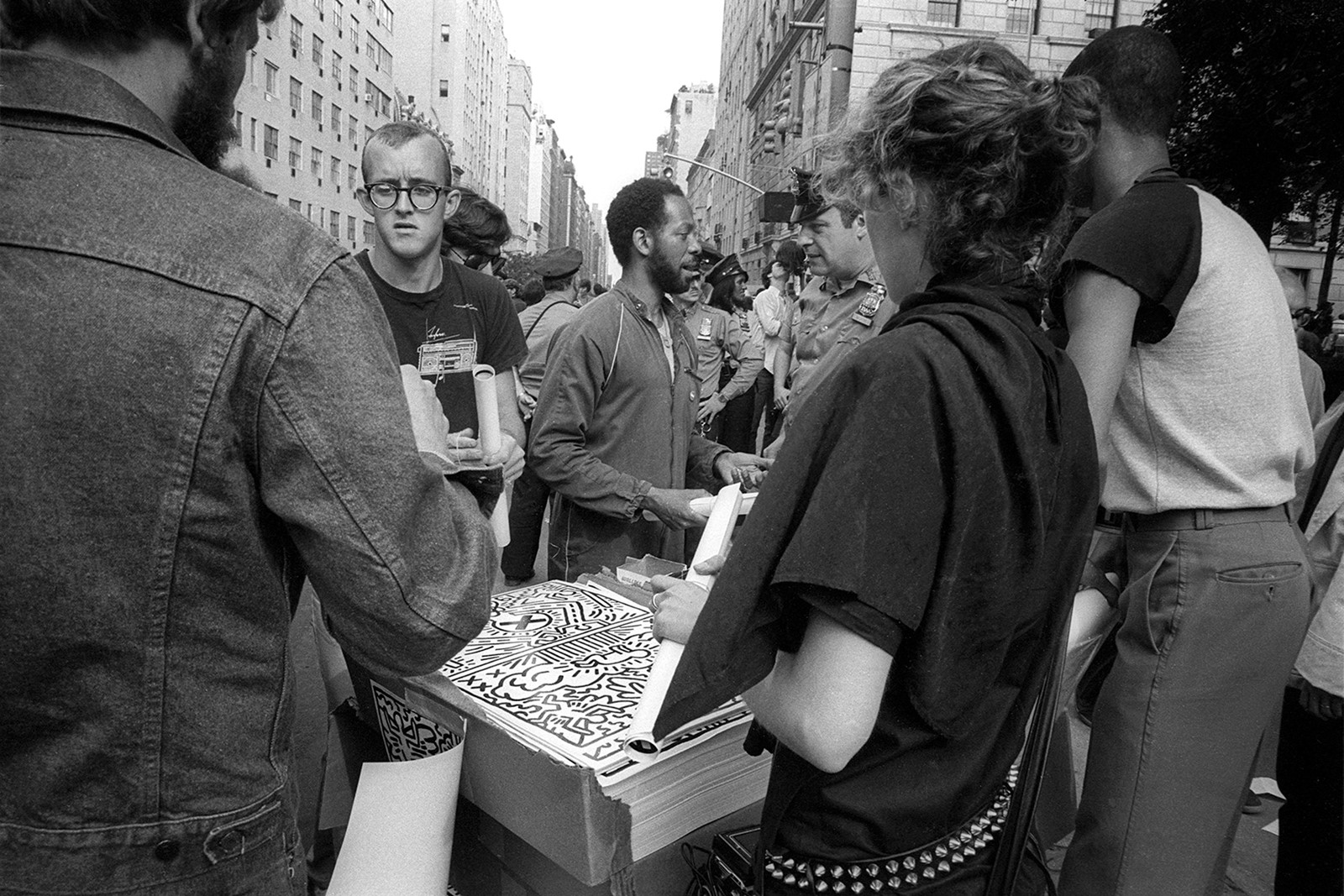
“I don't know if Haring necessarily called himself an activist in that specific word, but he did see himself as a spokesperson, and he used his platform to discuss issues that he thought were important. He really did that both through his drawings and his paintings. But he also created quite a large number of posters that addressed social-political issues, which is what you can see in this particular photograph. He would design the posters but he would also print thousands of copies and give them out at demonstrations, so he was very active in that sense. This photograph is from an anti-nuclear protest in Central Park in 1982 where he gave out 20,000 posters together with his friends. He was not just using these political topics to inform the subject of his work, but he was actively going out onto the streets. He was arrested during protests at some points too, so he was very much an activist in that sense.
“There wasn’t much of a distinctive line between (his artworks and his ephemera works). Obviously, they served slightly different purposes, but I think Haring quickly realised that his iconic visual language was quite accessible and a very good way of delivering certain messages and having dialogues with people.”
GRACE JONES BEING PAINTED BY KEITH (1986): CLUBBING WAS NOT JUST A LIFESTYLE, IT WAS HIS LIFE
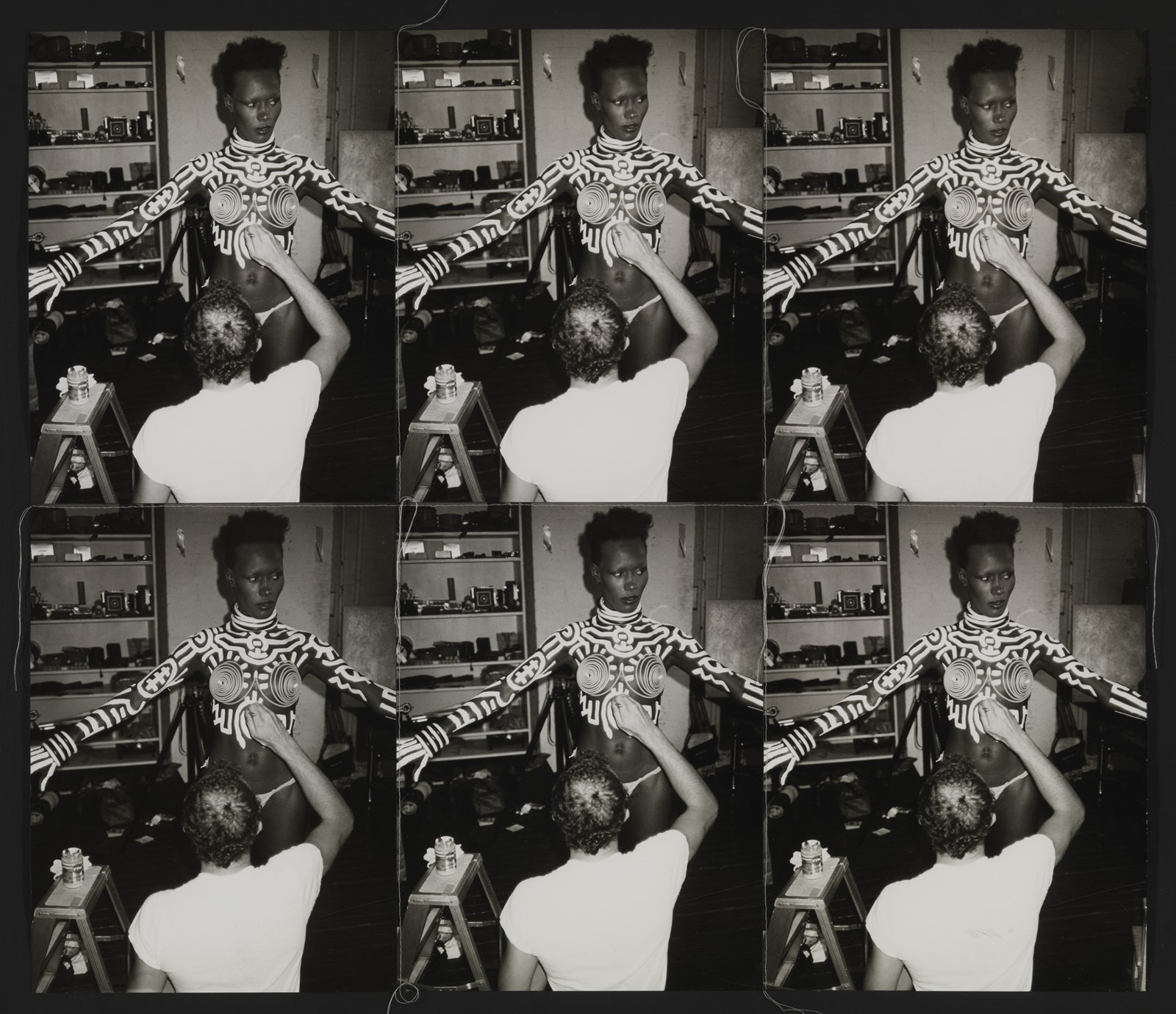
“The club scene was important, not just for his work, but for his life. Haring came to New York in 1978 and very quickly started going to Club 57, a nightclub, which was the kind of place where he met a lot of performers and artists who became a part of his social circles, people like Madonna, for example. But at the same time, he started organising performance evenings and was curating work by his peers. It was a very creative, artistic scene that was taking place.
“He first painted the body of Grace Jones in 1984. He covered her in his marks and symbols, and that process and the end result were photographed by Andy Warhol and Robert Mapplethorpe. The photographs appeared in Interview magazine. But Haring collaborated with Grace Jones on quite a number of occasions, and one of them was for a performance at the Paradise Garage, as well as for her video for her 1986 single ‘I'm Not Perfect’. In that you see Haring painting a skirt that she wears. This particular image is just one of Grace Jones having her body painted by him, but they worked together for a number of years.
“Haring was interested in using the body as a canvas in a way. He also did this with Bill T. Jones, a choreographer, and he painted a number of other people later on. But he and Grace Jones became friends and it was very much a creative collaboration, it wasn't just Haring painting her, but it was her incorporating it into her performances.”
“CRACK IS WHACK” (1986): HIS WORKS ONLY GOT BIGGER AND BIGGER
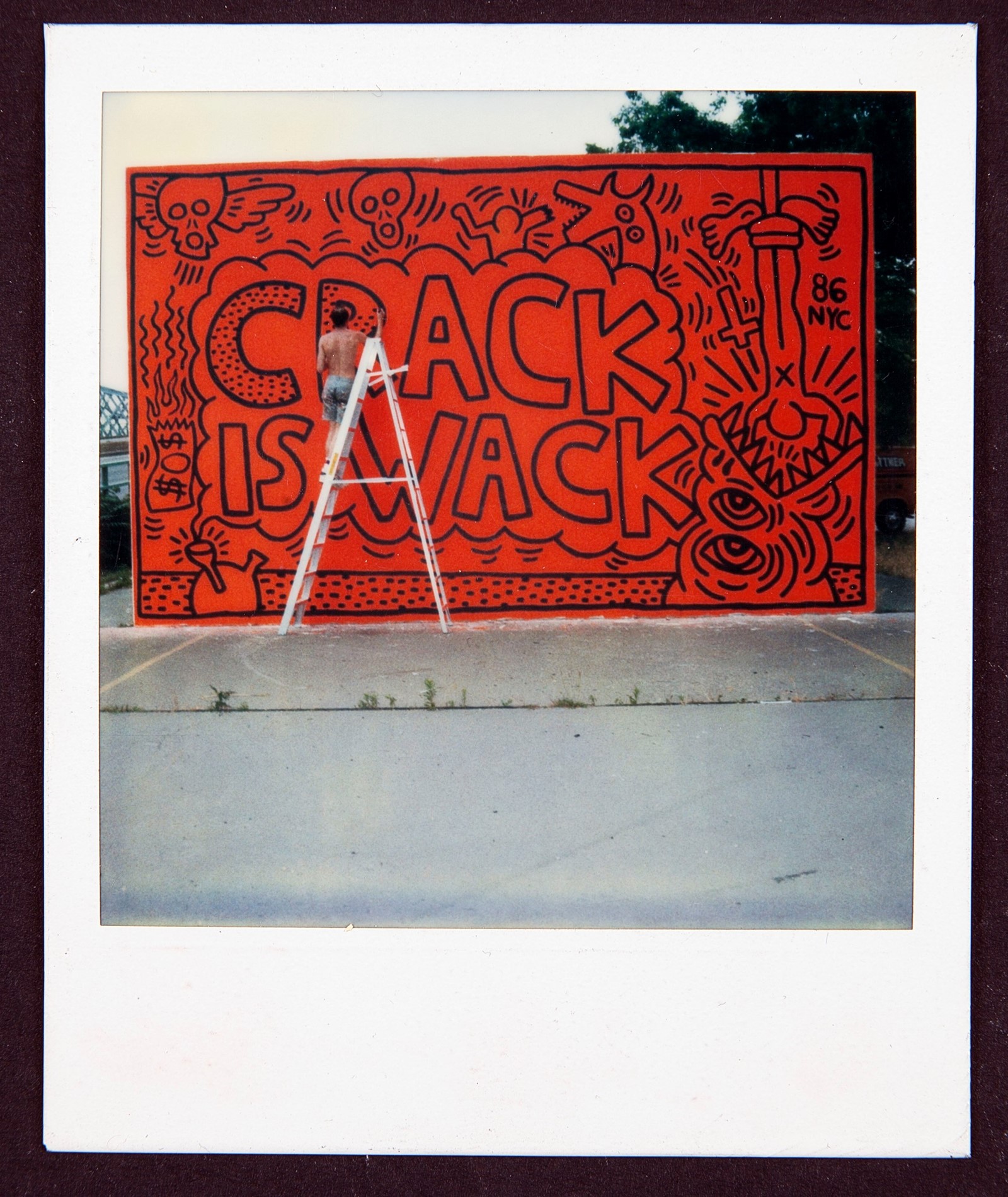
“There was a huge surge in the use of crack cocaine across American cities from the early 1980s, and it was something that affected the East Village where Haring was spending a lot of his time. So he would see it and he had that wider view of what was going on at the time due to his personal experience. In 1984, it was his studio assistant, Benny Soto, who became addicted to crack. He was a really intelligent kid who had a really bright future, and so seeing the effects of this drug on someone so close to him would have had a massive impact on Haring. Haring and other people in the studio really tried to help him to recover, and he did recover in the end, but it really would have shown the danger of the drug.
“There have always been two kinds of responses to his public work, and with the subway drawings as well. On one hand, people would be really interested and interested in seeing him make the work, and really loved his imagery, but then the authorities would arrest him or make him pay a fine. For the ‘Crack is Whack’ mural, I believe he was arrested and made to pay a fine. (The mural) was painted over, and then he repainted it.
“He often worked with people from the community, and he worked with a lot of kids; he would draw the outline and the children would help fill it in” – Tamar Hemmes
“When he was making these works in the community, he often worked with people from the community, and he worked with a lot of kids; he would draw the outline and the children would help fill it in. So he created very personal connections and I think he was quite loved in those communities.
“(The way he worked was) he would basically have an idea and just start drawing. With certain murals, when he was working at a height and couldn't easily step back, he'd just draw and somehow knew where to put the lines. It's amazing that he could create such a large image without having to plan it in advance.
“He would make a lot of murals when he was abroad and was quite often invited to do murals. But this one is very important to New York. One of them still exists even though it’s covered up.”
“SAFE SEX!” (1987): HIS ART HAS SAVED LIVES, EVEN AFTER HIS OWN CAME TO AN END

“Haring was diagnosed with Aids in 1988, but he had an awareness of it much earlier. From the early 1980s onwards, he had seen many people around him affected by it and I think he knew that there was quite a big risk that he would be infected himself. (In his journals) in 1987, he writes that his friends are ‘dropping like flies’ and he knows that it must be divine intervention that kept him alive this long. And then he says something like: ‘I don't know if I have five months or five years, but I know my days are numbered.’ He was definitely very much aware, and he was aware that it was likely that he would contract Aids. So many people were dying from the disease at the time and there was such a lack of response from the government that it just spread so rapidly.
“He was obviously always very prolific and created a huge number of works, but I think, in a way, that drive to create increased even more after he was diagnosed. He did create quite a few works related to the Aids epidemic. The ‘Safe Sex’ poster, for example, was obviously such an incredibly serious topic, but he addresses it by making quite a humorous poster which makes it much easier to talk about. He also created work with the ‘Silence Equals Death’ slogan, which was a slogan that was very much used by (Aids activist organisation) ACT UP when he joined them in their protests and created flyers for them. He was very much involved with them, which probably came out of him being diagnosed. In 1989, he established the Keith Haring Foundation. Its mandate was not just to increase the audience for his work, but to provide funding and imagery for Aids organisations and to support children's charities.
“I think, in a way, that drive to create increased even more after he was diagnosed (with Aids)” – Tamar Hemmes
“Because there was no proper medication at the time, he knew that his life wasn't going to be very long. And I think that he wanted to make sure that things were in place and that he didn't have to worry about anything, so with the foundation, he really made sure of that, and
“He was very generous, he was always giving money away, working with charities and working with children's hospitals and schools, and I think that's something that was important to him, that he wanted that to continue. Because the Reagan administration was completely silent on the Aids issue for so long, voices like Haring’s were even more important and he had a way of communicating with people that were just so direct and irrepressible. It's great he continued doing that (after his passing), he definitely would have reached a lot of people with it.”
Keith Haring runs at Tate Liverpool from 14 June – 10 November
Main image credit: Keith Haring Drawing Series, January 1982, photographed by Joseph Szkodzinski, © Joseph Szkodzinski 2018 www.thefoundimage.com
